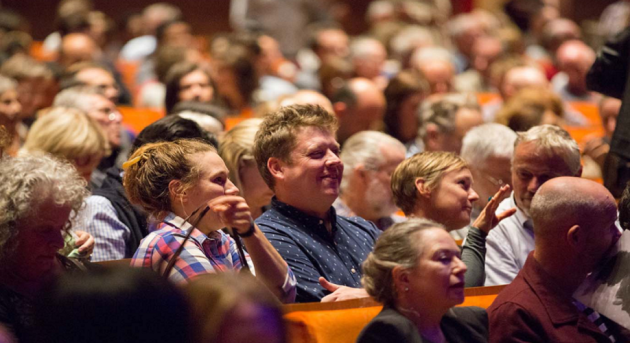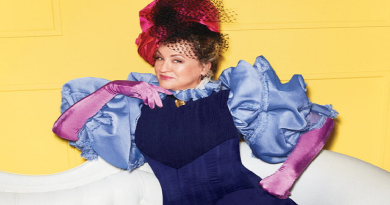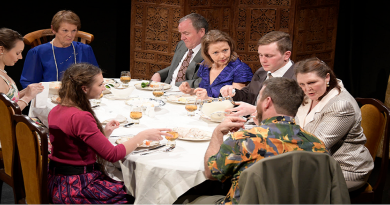Aus-first survey shows where arts can do better on audience diversity
Many of Australia’s arts organisations are talking the talk when it comes to improving the diversity of their audiences, but far fewer are walking the walk on the critical actions needed to get there, according to a nation-first survey led by Deakin University.
Results from a survey of more than 1000 arts workers working across 184 Australian arts organisations have shown there is plenty of work to be done in building better understanding and engagement with audiences.
- 43 per cent reported no strategic commitment to audience diversification.
- While all organisations surveyed said audience diversity was important to them, nearly half had not identified which diverse audiences were the target.
- Very few (less than half) of respondents considered changing their programming to attract new audiences, focusing instead on programming for known audiences and existing stakeholders.
- 41 per cent relied on assumptions about their audience and didn’t engage in any audience research.
Almost a third said their connection with their audience was chiefly through the box office.
A team from Deakin and the University of Sheffield undertook the survey to identify strengths and weaknesses in the work needed to diversify audiences, supported by funding from the Ian Potter Foundation and the Australia Council for the Arts.
The survey identified eight tasks that lead to more diverse audiences and outlines how organisations can be Leaders, Adaptors or Avoiders of this work.
It found most Australian arts organisations are ‘Adaptors’; undertaking partial change but yet to make the full breadth of organisational change needed to diversify audiences, instead focusing on programming for loyal and familiar audiences.
Deakin Business School Professor of Arts and Cultural Management Hilary Glow:
The aim was to shift the social profile of arts audiences to include more First Nations people, deaf and disabled communities, and those from different cultures, age groups, geographic locations, and sexual and gender identities.
More diverse audiences can bring big benefits for arts organisations including the ability to share new and distinct stories, increase the public value of arts, and improve financial sustainability
Attracting new and diverse audiences will require changes to the practice of arts organisations, and they need to be encouraged or assisted to make these changes.
The most positive response in the survey was the recognition of the need for change. But Professor Glow said she was surprised to see a high prevalence of ‘Avoider’ behaviour in some areas, particularly in identifying target audiences, researching these audiences and their barriers to participation, and then adaption of programming.
she Said:
Our findings help to explain the lack of diversity in arts audiences. Arts organisations are either uncertain of or resist the work needed to change the social profile of their audiences.
This report also highlights the need to build the skills and capacity of arts organisations to undertake audience-centric practice.
Professor Glow:
The team was pleased with the large response to the survey. this, plus the project’s support from all state and territory governments as well as peak bodies in the arts and cultural sectors, showed there was significant goodwill towards the idea of improving audience diversity.
The critical next step is converting this goodwill into meaningful and effective action
As part of the project’s next stage, a panel of change experts has been identified who exemplify the work needed in arts organisations to diversify audiences.
Alongside the project team, they will work with 11 arts organisations to form a ‘Community of Practice’ to inform the production of development resources for the wider sector encouraging change and ‘Leader’ behaviour in all arts organisations.
For more information click Here





I’m really surprised that this is how theatre in Oz is portrayed by the academics. For a start, there seems to be an implication that all theatres have the same audiences, which is patently untrue. There is the State Theatre Company audience which is the well-heeled out to be seen. There is the experimental stuff done by very talented kids out of uni drama (or some such) which attracts a very young audience – should they be performing things that would attract old(er) people? Should they put their prices up because well-heeled audiences turn their noses up at cheap tickets? I don’t think so. I go to a lot of theatre shows in Adelaide and it’s striking how different the audience is from one show to another.Many of them probably reflect the local population. Go to the Fringe – we went to several dozen shows this year – and you see hugely different audiences from one event to another.
The fact is that we have many different types of theatre experiences in Adelaide (and in Melbourne too) and it would be truly tedious if they all had to put on stuff which appealed to one and all.
All in all, I’d blame the Australian population for its lack of interest in theatre, not those putting it on. You can see remarkable performances at what the State companies would call suburban amateur companies, but are actually about on a par with the State companies without the budget to go with it. They are incredibly cheap to attend and are pretty good at picking what to put on. I marvel at the strength of the younger actors in Adelaide, as the older ones drop out, they needn’t worry about who is going to take their places. I’m ashamed that even though I know a lot of people who would consider themselves cultured, almost none of them go to theatre but that’s their fault. The companies putting shows on aren’t doing anything wrong.
There IS a natural diversity in Arts audiences, just not diversity under one roof. As indicated above, a State Theatre Company attracts a certain audience. An amateur company attracts an audience who will support that particular company, whether for content or affiliation reasons. A specific-themed company will attract the faithful and hopefully a fringe of those-interested who will re-attend or not depending on the quality of the production. And that is the big factor which can’t always be controlled when it comes to diversity. Audiences will turn up in diverse droves to check out acclaimed productions of any works. Those who have never seen it will turn up to finally check out a good production of The Mousetrap. Non-Musicals patrons will turn up for a star-studded production of Jesus Christ Superstar and not be perturbed by a lesson in religion. Pro-Musicals patrons rolled up in droves to see The Book of Mormon, not knowing what they were about to see but reacting to the hype, and again being unperturbed by a lesson in religion. Audiences will attend The Sunshine Club because it’s a good show and then discover its themes. Non-theatre people will roll up to see a well-advertised stage production of a favourite novel, and many will return. Anti-Shakespeare persons will attend a Bell production on reputation or on the casting of known actors. Theatre groups being expected to offer individual diversity in one show is like expecting Taylor Swift to include some C & W, some R & H, some G & S, some Third World chanting in her performances to offer diversity. The performer will be what they are; the show will be what it is. Audiences will then decide their tastes. Society cannot arbitrate that for them. Any other response leads only to bland homogenisation. The trends of society emerge from society and alter themselves with the times. Surveys that identify supposed strengths and weaknesses are themselves subjective in making those decisions. The survey is an interesting statistic in the aftermath. Public opinion will be decided by the public, not controlled by academic waspiness.